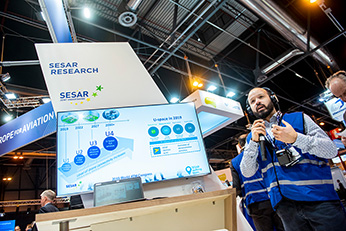U-Space Initial Services project aims to demonstrate the technical and operational feasibility of providing in a very short time frame U-Space services to UAV/RPAS operators and to authorities focusing on:
* UAV/RPAS/Pilot/Operator Registration Service
* Flight Wish/Mission Notification & Authorization Service
* U-Space NOTAM Service (including dynamic NOTAM for VLL)
* UAV/RPAS Trafic Monitoring (including non-conformance vs regulation/authorized mission)
The project combines the expertise of key stakeholders of the future U-Space (Civilian Aviation Authorities/Air National Service Provider, UAV/RPAS Operators, Industries and Law enforcement authorities) in order to insure that the services demonstrated fit for purpose to their requirements, constraints and needs. By bringing 4 Nations together, the consortium puts a particular focus on demonstrating services that can be deployed at a EU level.
The consortium considered any type of operations (from visual line of sight to very long range beyond visual line of sight) in all environments (from rural to urban).
The demonstration proved that U-Space services can be deployed in short time frame enabling safe, secure and efficient UAV/RPAS flight while contributing to their societal acceptance.

In short
|
|
|
|---|---|
|
PROJECT ID
|
USIS
|
|
PROJECT TYPE
|
Large scale demonstrations |
|
FLAGSHIP
|
Not applicable
|
|
STATUS
|
Completed |
|
SESAR PROGRAMME
|
SESAR 2020
|
|
PROJECT DURATION
|
2018-01-01 > 2019-11-30 |
|
TOTAL COST
|
1 799 323,75
|
|
EU CONTR.
|
1 308 671,13
|
|
GRANT ID
|
783261
|
|
PARTICIPANTS
|
Thales Las France , Unifly, Direction Des Services De La Navigation Aerienne (DSNA), HungaroControl, DFS Deutsche Flugsicherung , Ecole Nationale De L' Aviation Civile (ENAC), ALTAMETRIS |
Ensuring U-space services are safe and secure
U-space relies on a higher level of automation than ATM. Many services are currently being developed and need to be validated and regulated to ensure safe and secure operations. USIS research sought to validate the services that will be provided by U-space service providers to drone operators and third parties, including the authorities in charge of the airspace, to demonstrate their readiness at a European level.
The USIS project considered initial U-space services of e-registration and e-identification, as well as more advanced flight planning, authorisation and tracking services necessary for beyond visual line of sight and operations over people. It also looked at scheduling and dynamic airspace management.
USIS partners carried out live demonstrations using a secure and resilient cloud-based platform at locations in France and Hungary. A dedicated application allowed drone operators to submit flight requests which were then analysed and approved or declined by the appropriate authority. An embedded hardware connected to the mobile phone network was used to securely identify and track the equipped drones.
In France, the trial focused on current use cases. For example, drone operators in Lille region participated while conducting regular operations such as aerial videos in rural and sub-urban environments. A few dedicated flights were also organized around Lille airport. In Hungary, the trial focuses on future use cases. Dedicated flights were carried out in a rural environment, exploring search and rescue, parcel delivery, agricultural surveying and surveillance scenarios.
The research validated the use by a platform of a national registry (using the example of the French AlphaTango service); and confirmed the technical feasibility of secured identification and tracking of drones through an embedded hardware connected to mobile phone networks. This was used to monitor the compliance between the position of the drones and the approved operations.
The project showed that initial U-space services can support multiple numbers of drone operations without creating additional workload for an operator or impacting the safety of the airspace. It highlighted the need for flexibility when carrying out flight planning and approval management processes to cope with different national and local regulations.
Further examples by active drone operators will contribute to future research and development.



